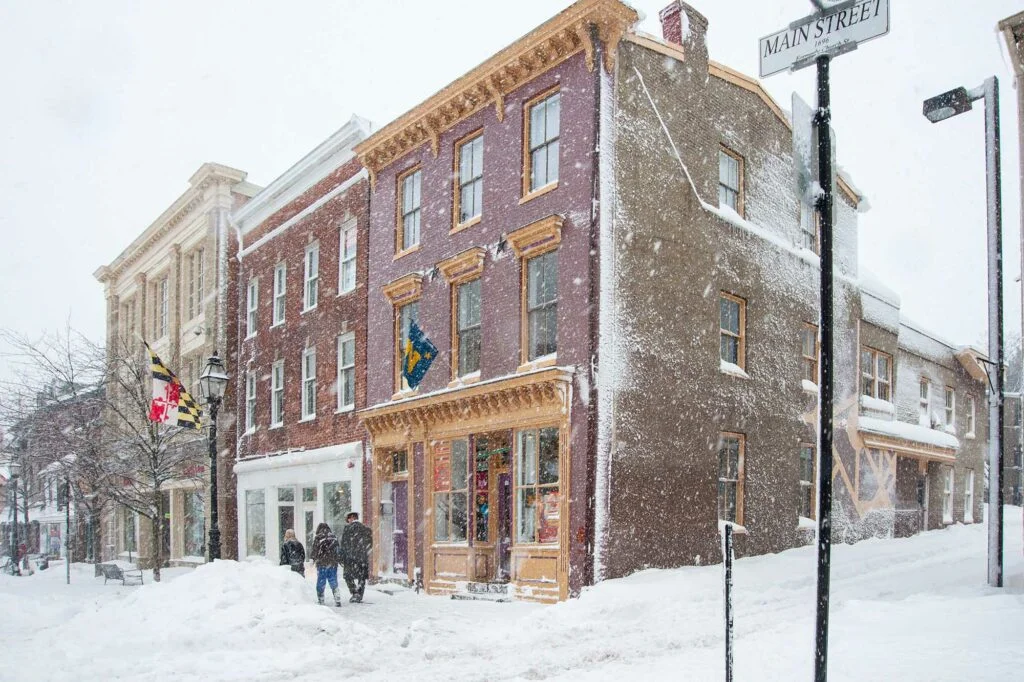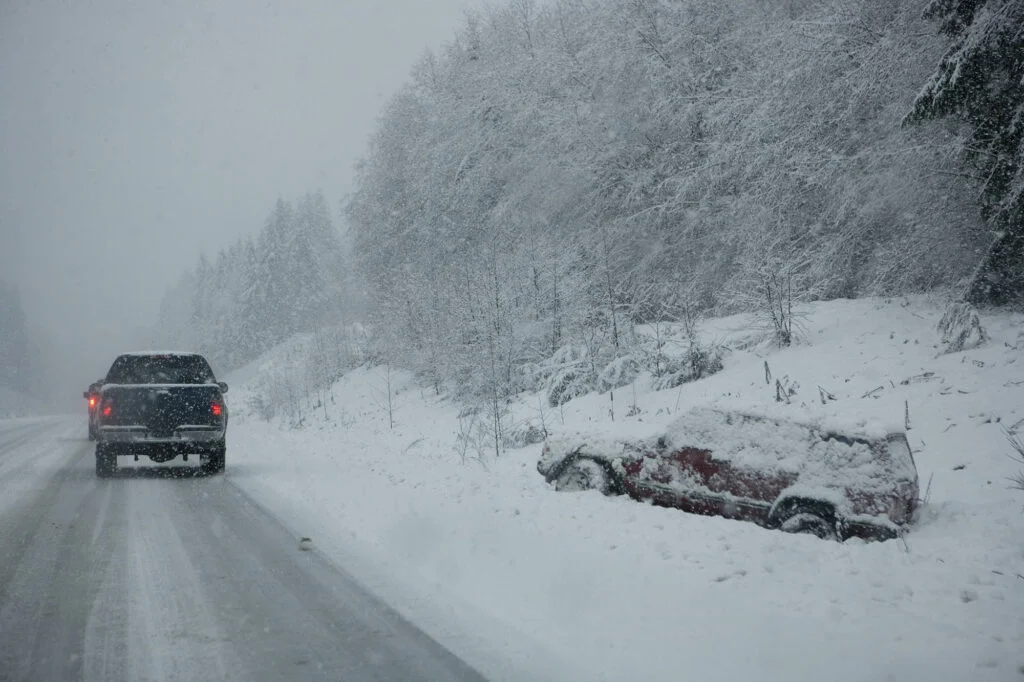Although blizzards are most common in the Great Plains, the upper Midwest, and the Northeastern U.S., blizzards can occur just about anywhere where snow falls in winter.
The National Weather Service issues a blizzard warning when severe winter weather and blizzard conditions are expected in the next 24 hours. Your local National Weather Service office may upgrade a winter storm warning to a blizzard warning if conditions warrant.
The NWS issues a winter storm warning for most significant winter storms, but blizzard warnings are rare. Read on to learn more about blizzards, warnings, and some blizzard safety tips.
What is a Blizzard?
According to the National Weather Service, a blizzard is a winter storm with winds, heavy snowfall, blowing and drifting snow that reduces visibility to ¼ mile or less for three hours or longer and sustained winds or frequent gusts to 35 mph or more. There are no temperature requirements, although bitter cold temperatures often accompany blizzards. Total snow accumulations also vary: some blizzards produce only a few inches of snow, while others produce feet of heavy snow.
Blizzard warnings are typically issued after a winter storm watch. However, a winter storm warning can be upgraded to a blizzard warning if conditions occur during the storm.
Similar to a blizzard in many ways, ground blizzards are caused by strong winds blowing snow into the air. Precipitation is not required for a ground blizzard, a key feature that helps differentiate blizzards from ground blizzards.
As with any severe weather, specific weather conditions are needed for a blizzard to occur. These weather conditions include:
- Cold air to produce snow. For snow to maintain its form, colder temperatures must be present in the atmosphere and the ground. If the ground level is too warm, the snow will melt before hitting the ground.
- Moisture is needed for clouds and precipitation. Before snow can form, moisture must be present. Since cold air is poor at holding moisture, most snow is not produced from cold air but comes from the water vapor emitted by lakes, rivers, and other sources.
- Moist air must rise over the cold air to create clouds and snow. As warm air flows up a mountainside, warm air eventually rises to form clouds and turns into snowfall. Additionally, snow forms when warm and cold air comes together to form a front.
Blizzards form when these weather conditions are present simultaneously in an area. The mixture of moist and cold air provides the optimal conditions for snowfall.
What is a Blizzard Warning?

A blizzard warning is issued by the National Weather Service when a blizzard is occurring or is imminent. Since blizzards limit visibility and can cause bodily harm, a warning helps locals stay informed and protect themselves ahead of time.
Staying indoors during a blizzard is essential for preserving body heat and avoiding conditions such as hypothermia and frostbite. Additionally, driving during a blizzard is dangerous because of the reduced visibility and the loss of tire traction caused by snow buildup on roads. We’ve listed some blizzard safety tips below.
Blizzard Safety Tips
Like other severe weather, preparation is the best way to stay safe during a blizzard warning and to reduce the risk of injury or damage to your property. Here are some tips to help you prepare for hazardous weather:
- Seek shelter and stay indoors. Blizzards are a nasty mix of snow, wind, and cold, so staying indoors is your best defense. Using the fireplace or turning on a heater to keep warm is important. Make sure you have sufficient heating fuel and emergency heating equipment ahead of time and fill your gas tank.
- If outdoors, protect yourself. If you must go out, dress appropriately, with multiple layers of warm clothing.
- Be prepared for power outages. You may lose power during a blizzard. Make sure that you have plenty of batteries for flashlights. If possible, use battery-powered lighting rather than candles to reduce fire risk.
- Monitor the latest weather reports. Since blizzards can be lengthy, staying updated on the latest weather forecasts is vital. Check weather forecasts using a mobile device, weather radio, or local news.
- Stock up on non-perishable food items. Whether stuck in a blizzard on the road or at home waiting for it to pass, you should have some non-perishable food items available. Blizzards can last for days and the effects for a week or more, so having a stockpile is crucial during prolonged events as it may be hard to get to the grocery store for a considerable period of time.
- Take breaks during shoveling. Shoveling snow after a blizzard can be a big task. Take frequent breaks, don’t overdo it. Heart attacks are a leading killer in the days after a blizzard hits.
- Do not drive. The blizzard will make travel very difficult, if not impossible. Without four-wheel drive, you will be at high risk of getting stuck, and emergency crews will be overloaded. If you must venture out, pack an emergency kit and fully charge your cell phone. Non-clumping kitty litter is also a good idea, as it gives you traction in the event you get stuck. If you do get stuck, stay with your vehicle and call for help.
- Watch your fireplace and coal-burning stove. If the exhausts of either your fireplace or stove get clogged by snow, you could be at risk of carbon monoxide poisoning.
Aside from prioritizing your safety, your access to information during blizzards is also essential. You can prepare for a blizzard by investing in a weather radio and tuning to your local NOAA weather radio station.
As one of the best weather radios currently available, the Midland WR300 is an excellent choice. The Midland WR300 provides standard SAME alerts and non-weather alerts with its large, easy-to-read display.

Wrapping Up
Although blizzards can be severe, there are easy ways you can prepare and stay safe. If you live in an area that regularly experiences blizzards, periodically take inventory of your winter supplies and monitor the latest weather forecasts and warnings.

